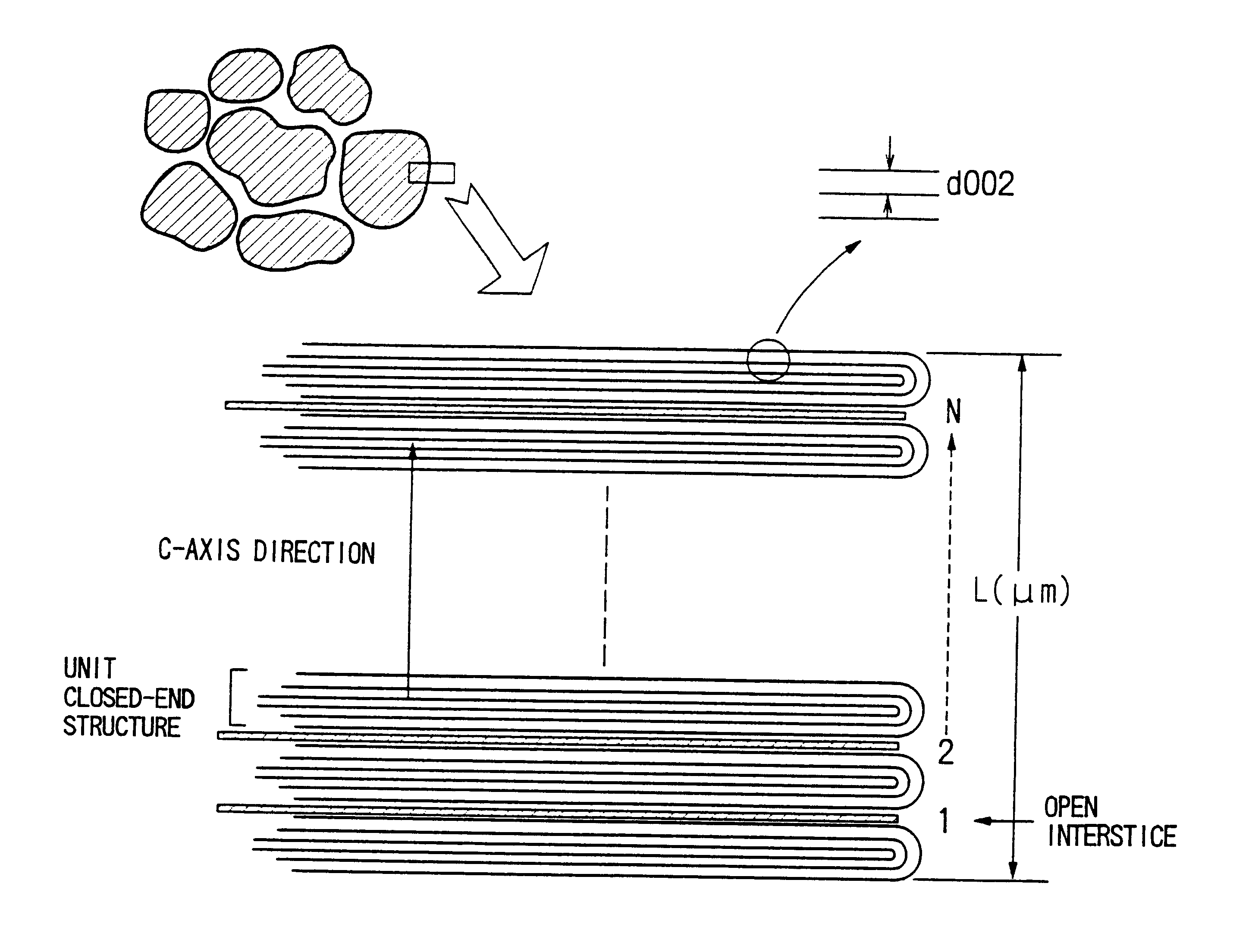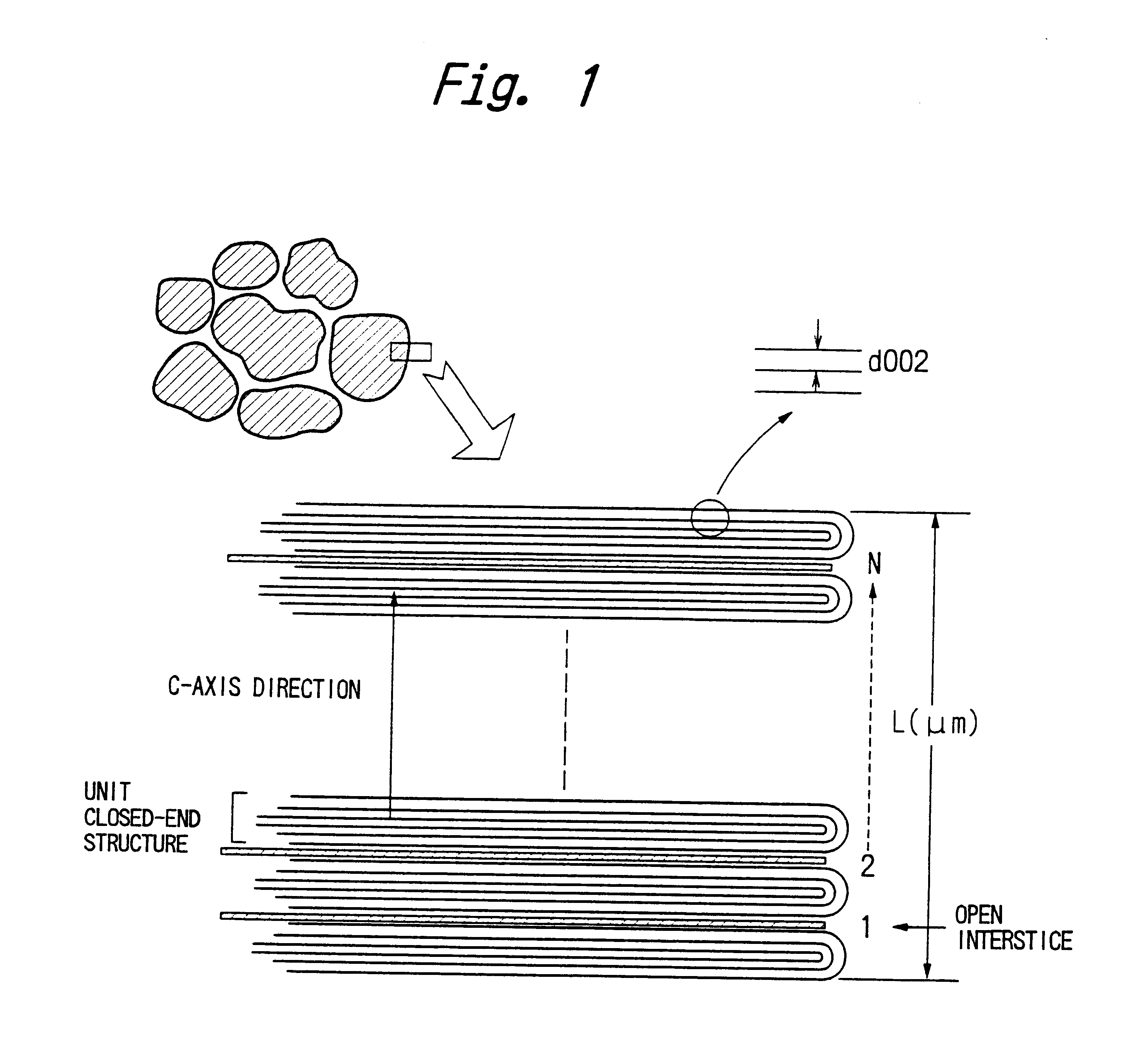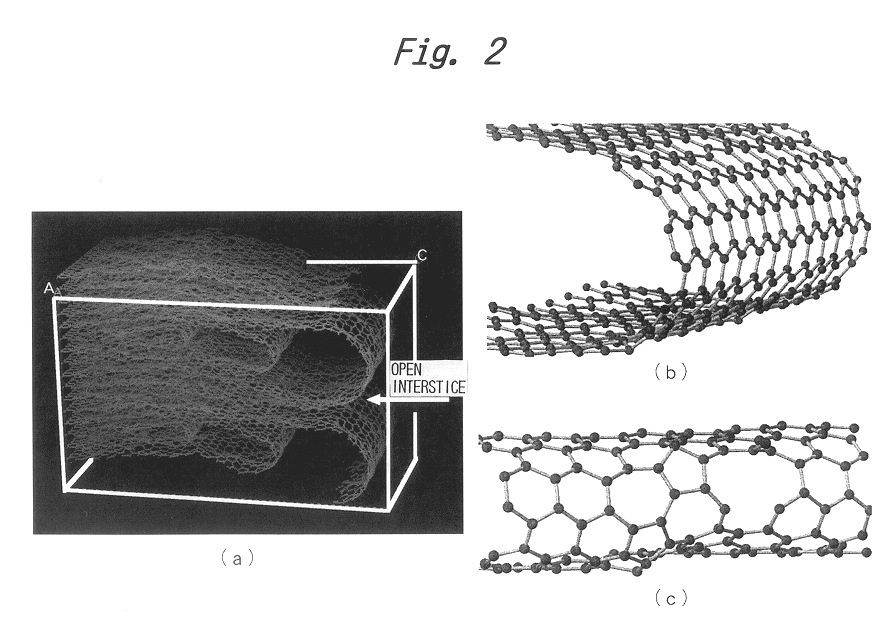Graphite powder suitable for negative electrode material of lithium ion secondary batteries
a lithium ion secondary battery and negative electrode technology, applied in the direction of electrochemical generators, cell components, electrochemical generators, etc., can solve the problems of negative charge of carbon materials, short cycle life of batteries, internal short circuit, etc., and achieve high discharge capacity and improve charge/discharge coulombic efficiency
- Summary
- Abstract
- Description
- Claims
- Application Information
AI Technical Summary
Benefits of technology
Problems solved by technology
Method used
Image
Examples
example 2
This example illustrates the preparation of graphite powders having surface closed-end structures according to the present invention by the above-described second process.
A bulk mesophase material obtained by heat treatment of petroleum pitch was pulverized, carbonized and graphitized in the same manner as described in Example 1. The pulverization was performed at a rotational speed of 7500 rpm (the same speed employed for the production of the graphite powder shown in FIG. 5) using the same impact pulverizer. Since the graphite powder was prepared under exactly the same conditions as described in Example 1, the resulting graphite powder had the same closed-end structures of c-plane layers having the same density of open interstices as shown in FIG. 5.
The resulting graphite powder was subjected, without screening, to oxidative heat treatment for 3 hours at 700.degree. C. in a pure oxygen atmosphere and then to additional heat treatment for 5 hours at 1000.degree. C. in an argon atmo...
example 3
Using a bulk mesophase material obtained by heat treatment of coal tar pitch, a graphite powder was prepared in the same manner as described in Example 1 except that pulverization was performed at a fixed rotational speed of 7500 rpm for different periods. The number of open interstices per micrometer and specific surface area of the resulting graphite powder (screened to plus 5 .mu.m and minus 63 .mu.m) are shown in Table 2 along with the conditions for pulverization. The results of discharge capacity and charge / discharge coulombic efficiency measured in the same manner as described in Example 1 are shown in Table 2.
example 4
Using a bulk mesophase material obtained by heat treatment of coal tar pitch, a graphite powder was prepared in the same manner as described in Example 2 except that the duration of pulverization was varied. The number of open interstices per micrometer and specific surface area of the resulting graphite powder (screened to plus 5 .mu.m and minus 63 .mu.m) are shown in Table 2 along with the conditions for pulverization and the results of discharge capacity and charge / discharge coulombic efficiency.
PUM
| Property | Measurement | Unit |
|---|---|---|
| specific surface area | aaaaa | aaaaa |
| lattice spacing | aaaaa | aaaaa |
| size | aaaaa | aaaaa |
Abstract
Description
Claims
Application Information
 Login to View More
Login to View More - R&D
- Intellectual Property
- Life Sciences
- Materials
- Tech Scout
- Unparalleled Data Quality
- Higher Quality Content
- 60% Fewer Hallucinations
Browse by: Latest US Patents, China's latest patents, Technical Efficacy Thesaurus, Application Domain, Technology Topic, Popular Technical Reports.
© 2025 PatSnap. All rights reserved.Legal|Privacy policy|Modern Slavery Act Transparency Statement|Sitemap|About US| Contact US: help@patsnap.com



